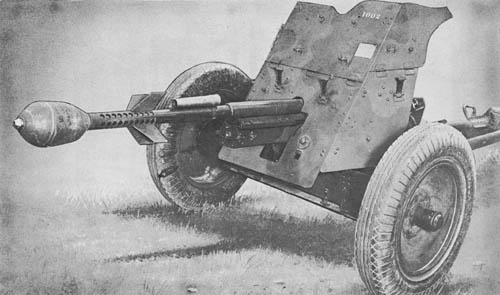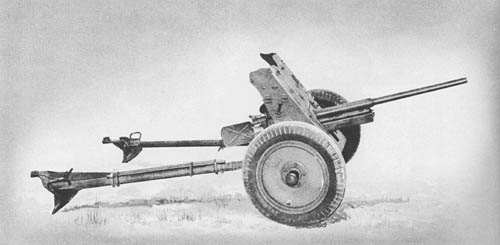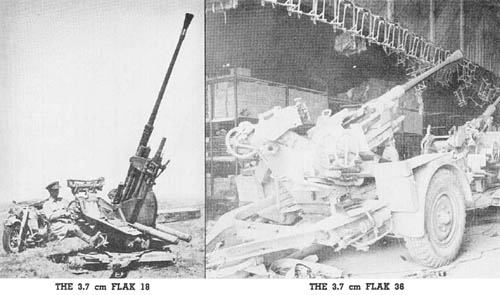
This deadly device is a hollow charge finned bomb for use on the 37 mm German Pak. It is believed that this type of ammunition was developed for the purpose of making this obsolescent gun more effective for antitank use.
The stick bomb which is made of pressed steel has a steel rod which fits into the bore and a perforated sleeve which fits around the barrel of the gun. The hollow charge is at the rear of the steel cup (or cone) and consists of two blocks of TNT with cyclonite. A nose fuze of the instantaneous percussion type and an instantaneous tail fuze are used. The nose fuze is used for impact against armor and the tail fuze is for graze action. Both fuzes arm on setback. The propelling cartridge consists of a steel case and is charged with tubular stick powder, an igniting charge of granular powder, and a percussion type primer.
Twenty-nine of these grenades were tested at Aberdeen. One was statically detonated against the face of 7-inch homogeneous armor plate. It penetrated completely, leaving a hole 2 1/8 inches wide at the face and 1 1/8 inches at the rear. The other rounds were fired from a German 37 mm A.T. gun for which they were designed. Range was found to be 203 yards at 5° elevation and 857 yards at 25° elevation. Accuracy was hard to determine because of the inexperienced gun crew.
SPECIFICATIONS
| Caliber of rod | 37 mm | |
| Weight of grenade as fired | 18 lb., 12 oz. | |
| Weight of burster | 5 lb., 5 oz. | |
| Weight of propelling cartridge | 1 lb., 6 oz. | |
| Overall length of round | 29 1/8 ins. | |
| Diameter of projectile body | 6 1/4 ins. | |
| Types of fuze | 1—P. D. Instantaneous 2—B. D. Instantaneous |
|
| Average velocity | 350 f/s | |
| Average pressure | 18,600 p.s.i. | |
| Range | ||
| 5° elevation | 203 yds. | |
| 25° elevation | 857 yds. |
German: p. 306

